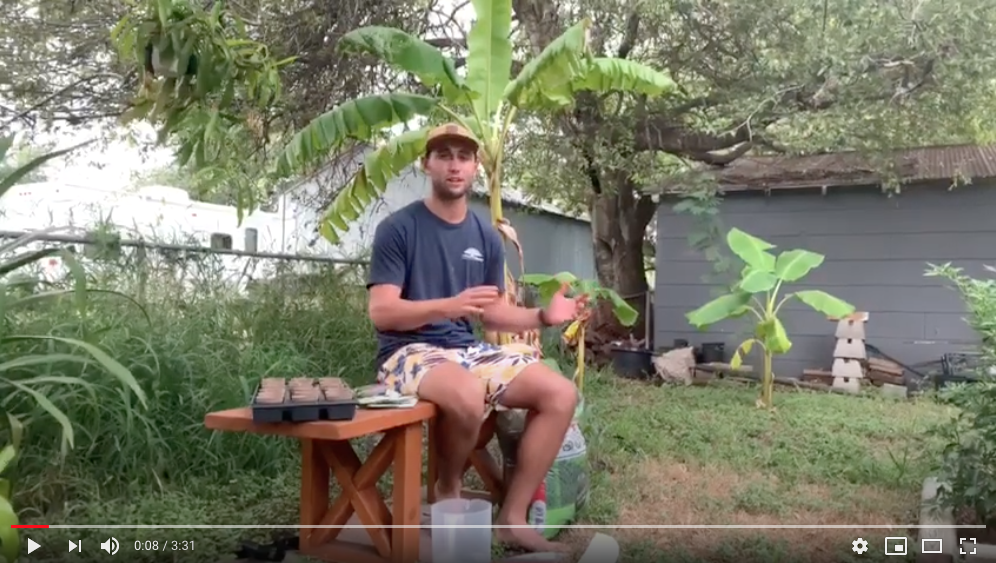Beautiful Fall weather is ahead and it’s time to get started planting veggies! I’ve decided to expand my veggie garden at home and invite you all to follow me this season for some of my best tips, successes, and failures to overcome. I’ll be posting video updates here in the Garden News and on Gill social media pages.
Part 2 – Starting Veggies from Seed
This Fall, I’m starting all my veggies from seed. Check out my video below to see how I start my seeds, and read tips below for additional info and a recap:
Video recap:
- Timing is everything. Make sure you are planting your seeds at the right time! Check the Gill’s seed planting guide for the best times to plant veggie seeds this Fall.
- Germinate overnight before planting. Put your seeds in a damp paper towel and leave them in a plastic bag overnight to help the seed germinate. (Don’t leave the seeds in the bags for too long or they may root to the paper).
- Small containers + Potting or Seed-Starting Soil. I like to start my seeds in peat pots but using things like egg cartons or paper cups works just as well. Fill your containers with a good potting soil or seed-starting soil and plant seeds at proper depth according to the directions on the seed packet.
- Pro tip: Water the soil thoroughly, then plant the seeds. That way you don’t need to blast your new seeds with water and risk displacing them.
- Tender young plants need love. Keep the soil damp, but not too wet. Gradually introduce the plants to more sun as the sprouts grow.
- Transplant. Once the seedlings reach approximately 3 inches tall (this is a general rule of thumb and depends on the plant), transplant into the ground or a raised bed. Be gentle to keep the soil intact around the root.
Happy gardening,

-Wyatt



Santana says
Is it to cold to put the seedlings in ground now? How deep should you till the ground?
James Gill says
This schedule will tell you which seeds to plant now and which seeds must wait for warm soil. https://gillnursery.com/wp-content/uploads/SpringFallVeg1.pdf
Tilling 8″ to 12″ deep is optimum. Try to do this when soil is lightly moist but not soggy wet. From one of our newsletters-
Clean areas of unwanted weeds and debris.
Break up the soil and add organic matter like Cotton Burr Compost, and turn or till it in.
Mix in dried molasses and organic fertilizer like Medina Growin’ Green.
Water and let it rest until you are ready to plant.
Keep it watered to encourage beneficial microbes in the soil.
Tina says
I’m planning on using cow manure that is from a nearby rancher any concerns or issues with using it?
James Gill says
Yes! Fresh manure is not good for the plants, it should be aged first. And manure from a pasture-feeding herbivore will contain many weed seeds, which will sprout in your garden. So either be ready to do lots of weeding, frequently, or much better, properly and thoroughly compost the manure, mixed with other organic matter, such as leaves, hay, or finely shredded brush and tree trimmings. You must have a large enough volume of compost, proper moisture levels, and plenty of oxygen (frequent turning of the compost pile) to generate enough heat to kill the weed seeds. This will take a few months and lots of work, but will give you an excellent product (probably some excellent earthworms also). We sell manure that has been carefully composted, unlike some discount store manures, where they hold the bag under the cow and say “Fill ‘er up!”